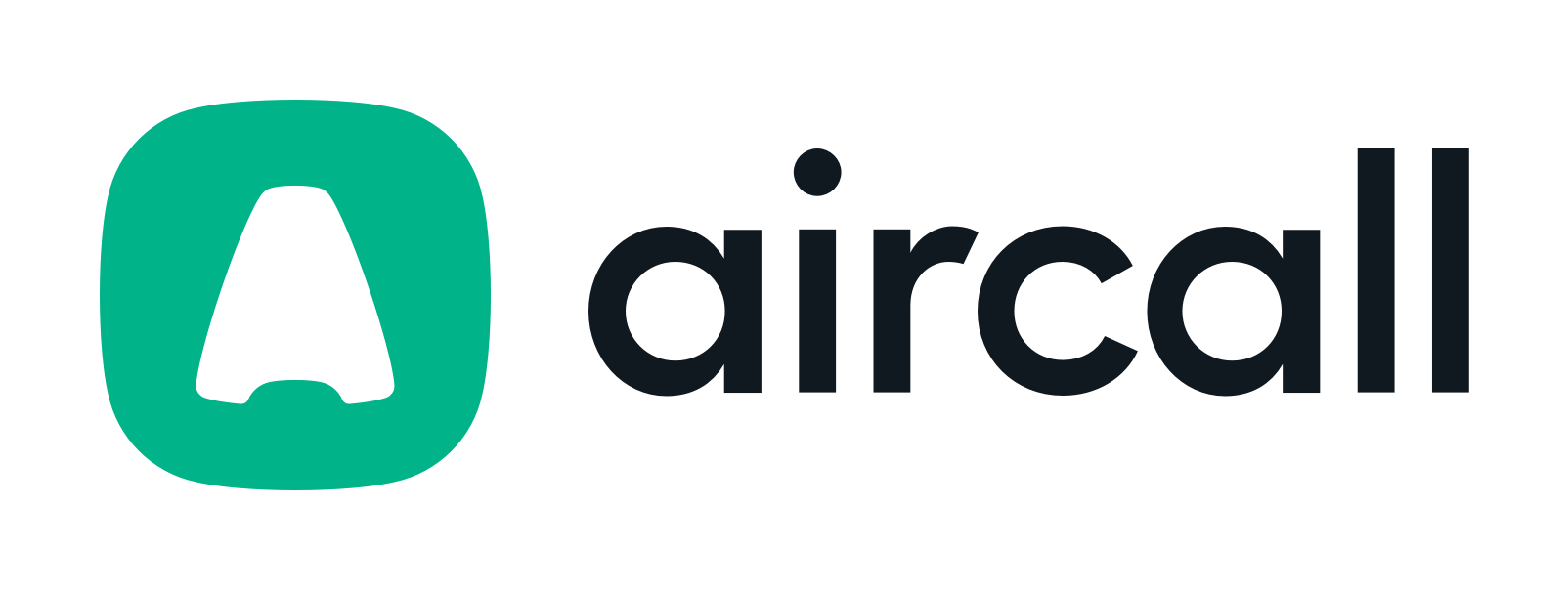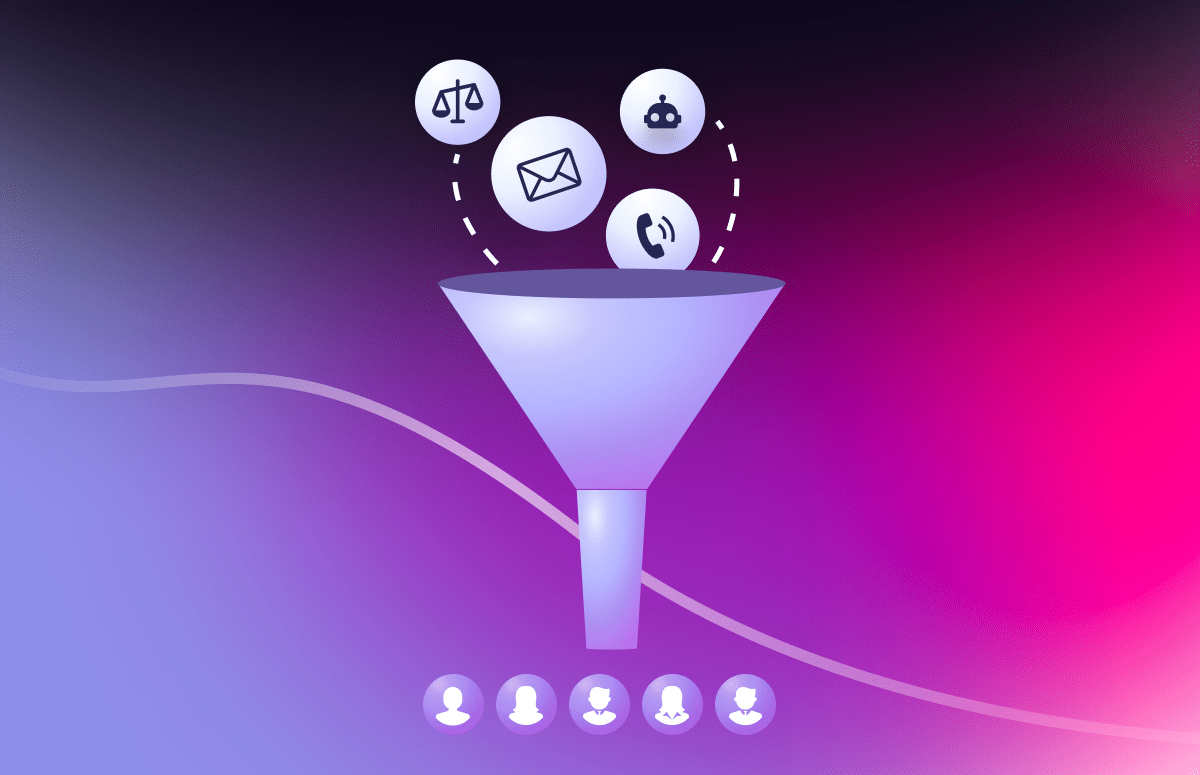
What's on this page:
Sales development representatives (SDRs) are struggling to hit targets. Booking outbound meetings took 200-400 touchpoints five years ago per sourced opportunity. Now, it’s more like 1,000-1,400 touchpoints.
The reason behind it? Well, from a top-level perspective, B2B buying behavior has changed.
There’s no hiding behind lazy prospecting anymore. 🫥
Reps and sales development leaders need to change how they operate to hit targets in this market.
The problem with most prospecting today
Has most historical cold outreach always been bad?
Or have prospects wised up to what outreach is good?
One thing is for sure: The market is more competitive than ever. Prospects have a level of choice that they never used to. And more channels to research their potential solutions, too.
Plus, there’s the fact that prospects receive tons and tons of outreach every single week. It’s no wonder SDRs need to do more to stand out. Because who wants to receive messages like this? 🤦👇

So, what else are some of the big problems with prospecting today? Key sales leaders and consultants who have come on our podcast have mentioned the ones below.
- The phone is being ignored. This is a big one. Cold calling is the most important channel; it allows SDRs to stand out and gather information. Yet, it’s ignored in favor of newer digital channels.
- Quotas are too high. Sales leaders have told us that they’re seeing companies set unrealistic quotas. Depending on your business, two meetings per rep booked a week used to be feasible. Now, it’s unachievable in this market.
- SDRs are young. Way back when being in sales wasn’t such a glamourized job role, reps were often called ‘telemarketers’. Now, it’s a career path people want to get into straight out of school or university. SDRs are younger than ever.
- Lack of proper training and enablement. Sales enablement is often overlooked. A lack of training leads to poorly equipped reps and bad prospecting efforts.
- Tech stacks are too complicated. We love tech as much as the next B2B company, but bloated tech stacks cause a big problem. Too many tools leave sales reps unfocused on what their real priorities are.
- Not enough active selling time. Reps bogged down with admin work or stressed about activity metrics aren’t spending quality time selling.
17 sales lead prospecting tips [That work]
Now that we’ve looked at what’s going wrong let’s get into the sales prospecting tips that will help you improve. These are all verified by top-performing SDRs we’ve had on our Teach Me Outbound (TMO) podcast or sales leaders on Everything is Sales.
1. Make more cold calls
Sounds simple. Probably because it is. Reps have to pick up the phone more than they are now. 📞
This may seem surprising, because the average cold calling success rate is around 4.8%, but when you consider the sheer amount of outreach SDRs manage and average deal value, those numbers are solid.
Many sales leaders we’ve spoken to have said that, in recent years, SDRs are shying away from the phone. Maybe this is because hiding behind emails, direct messages, or even WhatsApp is more comfortable.
But here’s the thing: sales teams focused on cold calling are hitting their quota consistently.
Here are some reasons why:
- The phone provides instant feedback; you don’t have to wait for a response, and reps can learn immediately.
- On a cold call, you can gauge interest from the tone of voice, questions answered and current situation.
- SDRs can use mirroring to create a rapport with the prospect.
- They can also immediately respond to any objections.
- It’s easy for SDRs to dig for information, which they can use when multi-threading and speaking to decision-makers in their target accounts.
Much evidence shows that the phone is the best channel to fill your sales funnel. James Isilay, CEO at Cognism, said that 65% of its SDR source pipeline is from over the phone. And Marc Parsons, SDR Manager at OneUp Sales, says that 90% of meetings get booked by cold calling.
Skipping back to the point made in the previous section, sales leaders should make sure new SDRs are prioritizing the phone. Owen Richards, Founder & CEO of Air Marketing, says he only gives reps a phone for their first month into the role.
He said:
“Go have as many conversations as you can. If you get zero opportunities, I’m happy with that. But tell me what you’ve learned.”
Think about it. You could send 100s of emails and get no response, but with cold calling, you always speak to your ideal customer profile (ICP). Even if it doesn’t translate into a booked meeting.
2. Be value-led
The importance of value-based selling is growing.
When you think about traditional selling, you think of an average door-to-door salesman. They were the only channel back then, and that’s the reason people bought from them. Now, prospects have options.
Sales prospects want to know that they’re implementing the best solution for the business they’re buying for. But potential buyers also don’t want to be shamelessly sold to. Prospects want all the facts; they need to know why your solution is better than sticking with what they already have.
Rory Sadler, Co-Founder & CEO at trumpet, spoke about this change in buyer behavior on our podcast.
He said:
“Buyers are spending less time with sellers. There’s so much more ease now around being a consumer. People want that in the world of B2B, too.”
“Everyone is busier, so they don’t have time to jump on multiple demos.”
So, what can reps do to be value-led? Well, for a start, it’s all about quality over quantity. 💯
Before, the spray and pray approach might have gotten a reply, but not any more.
Now, SDRs need to consider:
- Hyper-personalization in their outreach (and cold calls, too).
- Account-based selling (ABS) and account-based marketing (ABM).
- Micro-demos (because no one wants to watch an hour-long demo).
- Multi-threading stakeholders within accounts.
- Sharing relevant content at relevant points in the sales journey.
3. Think about how you’re qualifying leads
The shift from quantity to quality isn’t just for phone calls, subject lines and follow-up emails. It’s for leads you’re putting into your pipeline, too.
A higher quality lead means they’re more likely to turn up for their meeting with you. 📅
But it’s important to think about how you’re qualifying.
Budget, authority, need, timing (BANT), is often a heavily referenced framework for qualified leads. But Shabri Lakhani, Kaspr’s Subject Matter Expert (who has over 13 years of sales leadership experience), prefers PACTT.
This stands for:
- Pain - Your prospect’s pain point might be something they aren’t even aware of yet.
- Authority - This is about identifying your buying cohort. The ‘A’ part of PACTT is supportive of multi-threading within accounts.
- Consequence - This is Shabri’s favorite part and something BANT misses. The consequence is the ‘so what?’ question that SDRs should always be asking. It’s the consequence of the prospect buying your solution; it might not be a good fit if there isn’t one.
- Target profile - You’re always focusing on prospects matching your ICP. In PACTT, we consider profiles that might not be a good fit now but could be in the future for re-engagement, e.g. if they grow from 10 to 20 people in the team.
- Timing - The ‘T’ for timing here is broader than BANT. So it could be the prospect’s budget cycle, annual plans or end-of-year.
Shabri expands on why she prefers to use PACTT for qualified leads:
“I like PACTT because the ‘P’ stands for pain, whereas the ‘N’ in BANT stands for need, but often, when doing outbound sales, there is no immediate need. The pain element allows sales reps to uncover whether there might be a challenge the prospecting is facing that they are not yet aware of.”
4. Become a demand creator
We know that personal branding is so important now. SDRs shouldn’t just rely on their company’s marketing efforts. Reps need to become mini-marketers or demand creators.
What your prospect sees on LinkedIn and how you interact with them is an important touchpoint in getting to a sale.
You’ll also be able to connect with those not in the market to buy right now. We’ve spoken about it before, but SDRs need to work with prospects who aren’t active buyers (more on that later).
There’s also a lot of discussion about whether this shift will see sales reporting to marketing teams. As you can see, it’s hotly debated. ⬇️
%20%20%5B%2B%20FR%2c%20ES%20and%20DE%20variations%5D/Sales%20prospecting%20tips%20(POV%203%20narrative%20blog)/EN_linkedin-post-sdrs-need-to-be-mini-marketers.webp?width=546&height=697&name=EN_linkedin-post-sdrs-need-to-be-mini-marketers.webp)
5. Create a useful script to follow
It’s common for reps to struggle with what to say when they first start cold calling. Even experienced SDRs can benefit from having guardrails in the form of a structure to follow.
This is where cold calling scripts come in. Ryan Reisert, VP of Outbound Strategy at Apex Revenue, breaks down cold calling scripts into five sections.
They are:
- The introduction. Is it a permission-based opener?
- The purpose.
- Awareness.
- Questions and value pitch.
- Clear call to action.
The purpose of this structure is to do one thing. Get a response. As we’ve already said, the phone is the key channel that gives you real-time feedback from the prospect.
6. Block out time to prospect
It’s a no-brainer that managing time effectively is a core skill for SDRs. And prospecting should be a priority.
Time-blocking activities help to dedicate the right amount of time to daily tasks. We spoke to Will Falkenborg, SDR Lead at Champify on Teach Me Outbound, and he explained that he starts cold calling at 5 am to hit every timezone!
It’s pretty well known that prospects are more likely to pick up during the first hour and last hour of their workday. So, while you don’t need to get going as crazily early as Will, it’s good to know the best time to call.
How should you organize your time? Here are some tips:
- Split time out into 30-minute chunks rather than longer periods.
- Do not, we repeat, do not, get distracted during prime time.
- Keep track of your activities.
Something as simple as turning off distractions can also help, as Elric Legloire, previously SDR Manager at Agorapulse, suggests.
7. Build a social media presence
This doesn’t happen overnight. But loads of reps are realizing the power of social media in positioning themselves as being a guide.
Social media platforms like LinkedIn help you connect with prospects in many ways. And not just by sending a connection request. Every interaction can be a touchpoint in your sales cadence. Even if you’re just commenting on a prospect’s post with advice. 🆘
Jack Neicho, Senior Account Executive at Salesloft, uses LinkedIn to build relationships. Jack even has his podcast, “No Big Deal,” where he has sales professionals on to talk about what they’ve learned from deals gone bad.
It takes time to be seen as a thought leader, so you must set goals to hit on social media platforms. Morgan J Ingram, 3x LinkedIn’s Top Sales Voice, has some advice for you.
Morgan likes to break his goals into 3-5 to hyperfocus on them.
This could look like:
- I’m going to post twice a day.
- I’m going to engage with 10 people (your prospects) a day.
- I’m going to follow 10 new people I can learn from.
- I’m going to post 10 stories a day (if using Instagram).
- One of my two posts will be a long-form post.
These goals help reps focus on what they can control, but the most important thing is consistency! 💯
💡 Read more about your social selling index score and how to hit posting goals on LinkedIn.
8. It’s all in the follow-up
No channels are standalone. The phone is a priority, but reps must take a multi-channel approach to meet prospects where they exist on digital platforms, too.
A big reason why a lot of pipeline gets left on the table is that SDRs do not follow up enough. We’ve said before that the change in buying behavior has made sales processes longer. What this means is that cadences need to become longer, too.
Jack Neicho said on our podcast that Salesloft has found optimal outbound cadences to include between 14 and 16 touchpoints.
And that 90% of meetings are set after touchpoint six. Sadly, Jack also highlighted that a lot of reps throw the towel in after touchpoint two. Or just chuck the prospects into a spammy automated sequence (effectively pray and spray).
How do these optimal lengths compare with your sales cadence?
9. Make outreach memorable
Most B2B outreach is boring…
And it definitely shouldn’t be.
Reps have to stand out against so many others these days. Memorable outreach should be a priority. Jamie Parmar, Co-Founder at Ernest, has a unique approach to this. Jamie prioritizes the phone (as he should!), but it’s what he does next that helps him stand out even more.
Jamie says:
“Every time I have a conversation over the phone, I’ll end it in one of two ways. I’ll say, look, can I add you on LinkedIn? I’ll title it “Pink Elephant” so I stand out from the thousands of spammy connection requests you get.”
“And so, I can make my content more relevant to the people I’m trying to reach.”
There are, of course, more extravagant ways to do this. Direct mail and gifting can be a great way to make outreach memorable. But this is best reserved for your priority accounts, and it’s not as scaleable as the way Jamie does it! 💰
But memorable outreach doesn’t have to cost anything. Platforms like Vidyard make it possible to send something memorable and creative without reaching into a budget.
Ivana Ivanova, Account Manager at Cognism, brings her dog Benji into GIFs, videos and images she sends her prospects.
Here’s an example of one that secured her a lot of meetings! 👇
%20%20%5B%2B%20FR%2c%20ES%20and%20DE%20variations%5D/Sales%20prospecting%20tips%20(POV%203%20narrative%20blog)/EN_ivana-and-benji.webp?width=600&height=338&name=EN_ivana-and-benji.webp)
10. Use video
“A video for you, [first name]” is one of the subject lines that increased Rachel Goldstone’s response rates when she was an SDR. Now Director of Sales Development UK at Cognism, Rachel has onboarded hundreds of SDRs and oversees the whole department.
If you’re not already using videos in your cadences, add them ASAP! Prospects often think it’s a nice personal touch.
It’s easy to create memorable outreach with video, too. Just look at Will Falkenborg in his hot dog costume; who wouldn’t remember that?! 🌭
%20%20%5B%2B%20FR%2c%20ES%20and%20DE%20variations%5D/Sales%20prospecting%20tips%20(POV%203%20narrative%20blog)/EN_will-f-hotdog-video-prospecting.gif?width=300&height=530&name=EN_will-f-hotdog-video-prospecting.gif)
Here are some tips from Rachel for using video in your cold outreach:
- At first, video can be time-consuming. Have the skeleton script that you’d use in an email and personalize parts of it to the specific prospect.
- Focus your time where it’s worthwhile. Don’t spend ages personalizing a video for a prospect that isn’t as hot; instead, send one geared towards their job role.
- Adding a video in the first or second email works well. The prospect can immediately see your face and hear your voice. Videos help to show your personality.
- Find a structure that works. You don’t need to spend hours creating videos. Find something you can do fast and repeat. Try things that work from a company level unless it’s a key prospect. Rachel’s example is her team showing the prospect relevant data from the Cognism platforms.
11. Prospecting tools
Sales prospecting tools help speed up the prospecting process. Especially when you can access data super quickly like you can with Kaspr.
Sales reps use tools like Kaspr to:
- Get accurate phone numbers and email addresses.
- Enrich the data they need and send it to their CRM or other sales apps.
- Assist with automating parts of outreach sequences and managing their leads.
👉 Kaspr’s got a big European database that you can start using now!
Felix Frank, Founder of StackOptimise, uses Kaspr to find high-accuracy phone numbers.
As we’ve already said, too many bloated tech stacks exist. Too many tools cause distractions for reps. So, how do you know which tools are worth having?
For Owen Richards, focusing on tools directly benefited his prospecting. He said on our podcast:
“My question is always: Does it help us get more human conversations?”
“So a tool that helps you get phone numbers is a great tool to have in your tech stack. If it pushes your reps towards digital channels and distracts from human conversations, then it’s not achieving what we need it to.”
12. Get involved in online discussions
Reps now need to meet prospects where they hang out. This could be LinkedIn, online forums (particularly if you sell to a niche), Instagram, or TikTok. Find out where your prospects are active and use that platform to add value.
This doesn’t always have to be like creating your own content. It could be adding expertize by commenting on a post or just getting involved in something that’s not necessarily work-related.
If you need help with having a system to get involved with online discussions, check out this guide for B2B creators from Obaid Durrani, Head of Brand & Content at HockeyStack.
13. Understand your prospect inside-out
To sell these days, you’ve got to do more than understand your ICP. Many reps are now using bottom-up selling to get their foot in the door of accounts.
Bottom-up selling uses data that end-users can give sellers before speaking to the decision-maker.
Reps who use this approach will identify key stakeholders in the account first. After finding the stakeholders, they’ll go and speak to end-users to find out pain points. Then, finally, once the SDR has the info they need, they’ll bring the decision-maker into the conversation.
Cognism SDRs use this approach because:
- You can come to the decision-maker armed with information.
- It’s a way to multi-thread people within the account.
- It shows you genuinely want to help.
Here’s an example of a message you could send to an end-user for bottom-up selling, used by Piers Mosselmans, Senior Enterprise SDR at Cognism. 👇

14. Categorize your prospects
You need to know how to prioritize your sales leads. Remember quality < quantity.
Your biggest opportunity is the 30% of prospects that “aren’t thinking about it now” on Chet Holmes’ buyers’ pyramid. Of course, you can also look at those who are “open to it” and they are likely to fall into a hot prospect category.
So, how can you categorize all these prospects? Here’s some ideas:
Hot
- They’ve engaged back.
- These people could have come inbound - make sure you follow up.
- You could also use intent data to help identify these people.
Mid
- You’ve got information from end-users and know they’d be a great fit.
- They might not have engaged back yet.
- You’ve got a mutual connection.
Keep on the radar
- Are closed-lost - But this doesn’t mean they’re lost forever…
- Haven’t responded to any outreach yet.
- You know that they aren’t interested right now.
Leads in your ‘mid’ and ‘keep on the radar’ categories might come back with objections like “now isn’t the right time”. It’s important to be able to respond to this in the right way. Sometimes, it really might not be the right time. In this case, you must build trust and position yourself as a guide.
Chris Ritson, Co-Founder at Flxprts and Top Sales Voice on LinkedIn, says:
“The best SDRs I see don’t just disqualify the problems that the person they’re speaking to has now. They aim to help them with those problems even if their product can’t help them because it’s an amazing opportunity to build that trust in the relationship early.”
“So then when it comes to the next problem you can solve, bingo, you’re near the top of the list of people that can help.”
15. LinkedIn prospecting
LinkedIn is the most effective B2B platform to find new prospects.
You can find new prospects anywhere on LinkedIn, including through the feed or in your network, and you can also use LinkedIn Sales Navigator to search for potential customers based on factors like industry, company size, and job title.
Prospecting on LinkedIn offers several key benefits:
- Discover new prospects through existing customers’ connections lists.
- Gain insight into individual prospects— including their experience, needs, and preferences— to personalize outreach.
- Build your on-platform network to initiate conversations and stay in touch while building lead lists for off-platform outreach.
- Get access to exceptionally detailed and up-to-date prospect and company data.
- Use prospecting tools like Kaspr to capture contact data for off-platform outreach.
👉 Learn more about how to use Kaspr for automated prospecting on LinkedIn.
16. Account-Based Marketing
Account-based marketing and selling (ABM and ABS, respectively) is targeting specific companies and their decision-makers. It focuses heavily on prospect identification, research, and outreach personalization on a high level.
Account-based marketing tactics may include:
- Initial outreach on platforms like LinkedIn or through cold calling.
- Using company-specific LinkedIn Ads to send retargeting campaigns.
- Creating custom deals, demos, and sales pitches for each target account.
17. Referral programs
Leverage your existing client base and their network with referral programs.
Referrals typically drive positive results, including higher average order values, longer customer retention, and clients who are more likely to refer others to you.
Take advantage of referral programs by doing the following:
- Having formal, established programs that are listed on your site.
- Incentivize referrals, offering existing customers discounts or add-on benefits when their referral converts.
- Reach out to existing customers and alert them of the program; this is particularly effective if it comes from an account executive with whom they have a close relationship.
Common mistakes in sales lead prospecting
A few common mistakes are made every day in sales lead prospecting.
Here are a few pitfalls to keep in mind:
- Failing to qualify leads. Qualify prospects based on factors like ICP fit, intent data, and interaction history. Remember to look at the full picture and get qualifying data early to prioritize leads during follow-up processes better.
- Lack of personalization. You don’t want to spam every prospect with the same generic message. Send outreach messages or cold calls focusing on the client’s expected pain points and needs and try to make a human connection.
- Relying on tools with poor data quality. Outdated data can prevent you from reaching the right decision-makers, and non-compliant data can damage your brand reputation. Choose high-quality sales tools like Kaspr that provide high-quality contact data.
- Focusing exclusively on lead quantity. While prospecting is a numbers game, you need both quality and quantity to generate SQLs that convert effectively. Focus on processes and strategies that scale up quality lead generation, not just the number of leads alone. You can track metrics like booking meetings, deal value, and the number of deals closed.
Pushing for sales too early. The first conversation during outreach isn’t meant to push a sale. Pushing too hard can send leads running for the hills, so take time to start a conversation and nurture the relationship from there.
A final word on sales prospecting
So there you have it. These are the top sales prospecting tips for 2025. ✅
Selling to potential customers isn’t what it used to be. The market is more challenging; reps are getting into selling younger than ever and sometimes without the right sales skills.
Here are the core takeaways:
- There needs to be a greater focus on picking up the phone (and training people to do it).
- Quality over quantity is true for outreach and the sales prospects you put into your pipeline.
- Selling needs to be value-led, and selling methods like bottom-up are helping to achieve this.
- A carefully planned tech stack is crucial; if you bloat it, you will only create distractions for reps.
- The best outreach on saturated channels like email is memorable. Otherwise, you’re wasting your time.
Accurate European contact data
Get accurate data for your prospects and connect with your favorite sales tool









